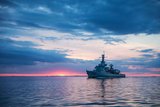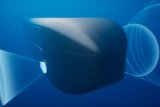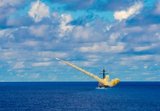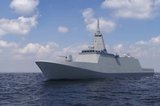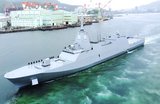InTop LLRAM demonstration completed
Northrop Grumman completed a critical test in the development of the Integrated Topside (InTop) Low-Level Resource Allocation Manager (LLRAM) programme in partnership with the US Naval Research Laboratory (NRL).
The LLRAM was demonstrated in conjunction with the the InTop Electronic Warfare/Information Operations/Communications (EW/IO/COMMS) system at the NRL’s test facility in Chesapeake Beach, Maryland.
The system demonstrated the simultaneous sharing of a single antenna, while flexing its adaptable size and antenna pattern capabilities, and performing a mission that would have previously required multiple dedicated antennas. The test was carried out as part of work to enable future antenna reductions on ships that are already capacity-constrained, allowing for more advanced capabilities in an ever-increasingly complex battlespace environment.
The demonstration showed that the EW/IO/COMMS Advanced Development Model for SEWIP Block 3 can serve as a platform for proving out advanced multi-function concepts using existing NRL test assets.
Mike Meaney, vice president, maritime electronic and information warfare, Northrop Grumman, said: ‘The Northrop Grumman/NRL demonstration of LLRAM concepts was conducted in the same environment that proved crucial to the development of the SEWIP Block 3 EDM.
‘The efficiency of signal sharing capabilities, scalability and advanced resource management capabilities developed on the LLRAM programme will allow for a significantly reduced footprint topside.’
The system leverages four AESA arrays (low band transmit/receive and high band transmit/receive) and intended platforms include cruisers, destroyers and aircraft carriers.
More from Naval Warfare
-
![US Navy advances with the Harpoon Service Life Extension Programme]()
US Navy advances with the Harpoon Service Life Extension Programme
The US Navy plans to improve Harpoon’s anti-ship and land attack capabilities by equipping the missiles with sensors and technologies required for succeeding in future battlespace.
-
![Future of the Canadian Patrol Submarine Project is still unclear]()
Future of the Canadian Patrol Submarine Project is still unclear
The Canadian government remains tight-lipped on the timeline and funding required for the next steps of its Canadian Submarine Patrol Project, which should offer improved capabilities for the country’s navy.
-
![Mitsubishi eyes future with Australia’s Mogami selection]()
Mitsubishi eyes future with Australia’s Mogami selection
With Australia’s selection of the Mogami-class for Project Sea 3000, Mitsubishi is investigating local production in the next decade as potential export opportunities emerge.
-
![Hanwha wins Australian government approval to increase its stake in Austal]()
Hanwha wins Australian government approval to increase its stake in Austal
The contract would mean the two shipbuilders can collaborate strategically and enhance shipbuilding capabilities in Western Australia.








